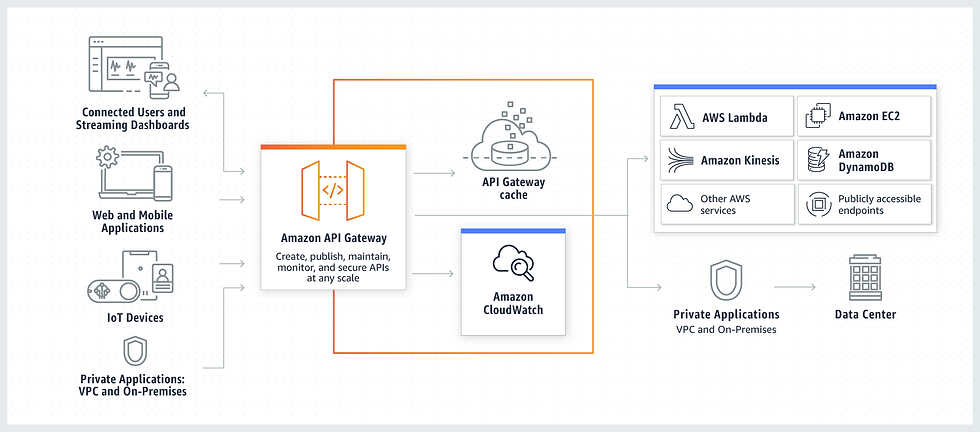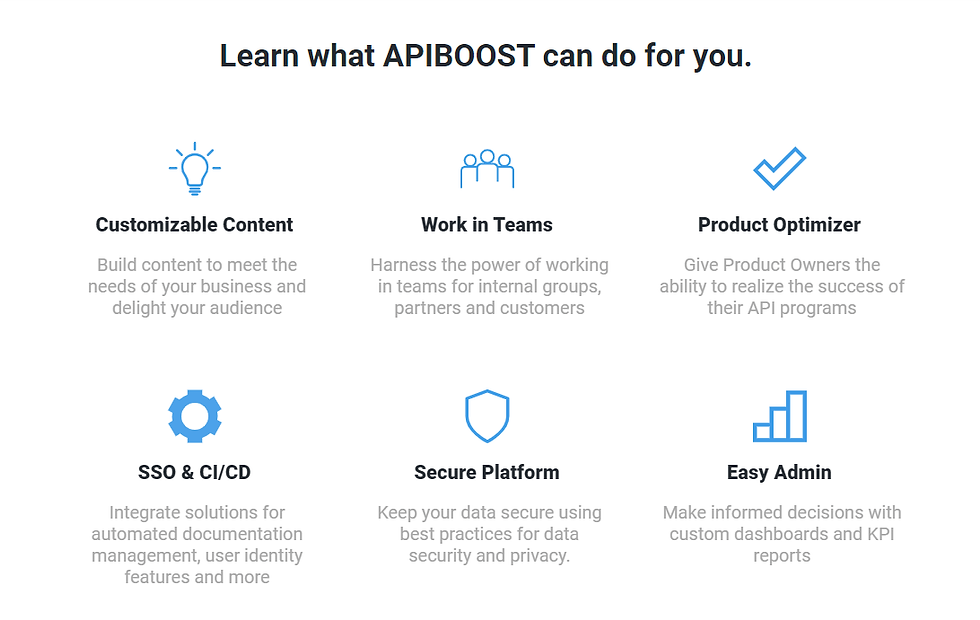
Considering that nearly 90% of developers use APIs when building software and applications and 69% use third-party APIs, API monetization has never been more crucial for unlocking new revenue streams.
A lot of tools exist in today’s market, but AWS API Gateway, or Amazon API Gateway, is one of the most popular options developers choose to monetize their APIs.
In this post, we'll look break down how to use your AWP API Gateway to monetize your APIs, and why it may not be your best option available.
A Quick Recap of API Monetization
API monetization is transforming your APIs into revenue drivers for your business.
There are many different monetization models for you to use, but some of the most popular ones include
Tiered where customers buy into a specific tier that meets their usage needs.
Bulk cost/pay as you go where customers only pay for what they use versus paying for a subscription or tier.
Subscription where customers pay a flat rate to access your APIs.
To help you develop an effective monetization strategy, some important questions would be:
Who's going to use your APIs?
What capabilities will they need?
What integrations will you need to support your APIs?
How will you determine which pricing model is best for your business?
Who's going to be responsible for governance and admin?
How are you going to market and promote your API products?
If you're not sure how to answer these questions, there are specialists who are willing to help you—now, let's get into how AWS approaches API monetization.
AWS API Gateway and Monetization

First, let's take a look at how the AWS API Gateway works. The AWS API Gateway is a fully managed service that makes it easy to create, publish, maintain, monitor, and secure your APIs.
It handles a lot of the heavy lifting of managing your APIs, so you can focus on building great products.
The AWS API Gateway lets you set up pricing and usage plans for your APIs, as well as track and monitor usage.
Since AWS API Gateway is integrated with AWS Marketplace and AWS Data Exchange, it lets you easily monetize the APIs you've built with the API Gateway. However, you'll need to configure their AWS API Portal or integrate your own API portal before setting up your monetization.
AWS Monetization Models:
Now that we've covered some basics, let's get into the AWS API Gateway's monetization models.
If you plan on selling your APIs through AWS Marketplace, you'll need to bundle your APIs together to create a software as a service (SaaS) product. There are three primary ways AWS API Gateway lets you monetize your APIs:
SaaS subscriptions: This is their usage-based pricing model (even though the label may be misleading). Consumers follow a pay-as-you-go structure and are billed based on their API usage. With usage-based pricing, you can easily scale your prices up or down as demand changes.
SaaS contracts: This is a subscription-based model where consumers are either billed in advance or payments are made on a recurring basis.
SaaS contracts with pay-as-you-go: This hybrid pricing model locks consumers into a subscription but lets them pay for additional usage as needed.
Additionally, you have the option to monetize (via subscriptions) your data-based APIs through AWS Data Exchange.
Benefits of Using AWS API Gateway to Monetize Your APIs
When it comes to monetizing your APIs, AWS API Gateway provides several benefits that make it a great option.
Customer acquisition: like all API monetization platforms do—making your APIs available on the AWS Marketplace, you open up your business to a whole new group of potential customers.
Unified billing: If you have multiple APIs, use the gateway's unified billing feature to bill all of them under a single account. However, you must integrate with AWS Marketplace Metering Service or AWS Marketplace Entitlement Service to use this function.
Reporting: AWS API Gateway provides detailed analytics about how your APIs are being used. This information can be useful in determining how to optimize your API pricing.
Throttling: Throttling allows you to limit the amount of traffic that comes through your API. This helps you manage your resources and keep your API running smoothly.
Quotas: Setting up a quota system ensures that customers only use the resources they've paid for. This helps prevent the overuse of your API and ensures that everyone pays their fair share.
Potential Downsides of Using AWS API Gateway to Monetize Your APIs
While AWS API Gateway is one of the most popular ways to monetize your APIs, there are some potential downfalls to using this method that you should be aware of before deciding to use it for your monetization needs.
Complex configuration: AWS API Gateway is complex to configure and manage, leading to errors and unexpected results. Establishing and maintaining your product monetization involves many moving parts, and it can quickly become overwhelming - especially with multiple usage plans.
No alterations to products: If you need to make any adjustments or changes to your product that's listed on AWS Marketplace, you'll need to create a new product.
Insufficient access control: While AWS does allow some accommodations for identity-based, resource-based, and network-based access controls, there are limitations as to which access controls you can place at a specific endpoint.
High cost: The AWS API Gateway can be costly, especially if you have a high volume of traffic to your API endpoints, which compounds as you need to access multiple services.
Limited developer portal: While AWS does offer its own serverless developer portal (AWS API Portal), it has limited capabilities and requires advanced configurations to get started.
Complicated CI/CD Integration: Setting up CI/CD pipelines requires intermediate to advanced knowledge of all services provided by AWS.
A Better Alternative to AWS API Portal
At the end of the day, the AWS API Portal is nothing more than a developer portal, meaning it's only useful to developers. Business teams and citizen developers won't be able to access and consume your API products because it's not designed for them.
What does this mean for you? It means that on top of spending precious time and resources to configure their portal, your API products won't be accessible to a wide range of consumers.
Advanced API portals, like Apiboost, make it easy for everyone to discover and consume your API products since they are designed to accommodate all your business's needs, not just the developers.
In addition to making your API products more accessible, these portals also:
Make it easy to onboard new users and expand your consumer base
Provide a centralized location for all your documentation
Have a user-friendly interface
Eliminate waste by unifying your APIs in one location and preventing duplicates
Encourage collaboration between your teams
Provide advanced reporting and analytics
Quickly customize your content to fit your needs
Optimize and manage your API products
Publish your documentation on an easy-to-use interface
Boost innovation by allowing you to work in teams
Harness the power of CI/CD pipelines

In order to truly unleash the power of your API monetization with AWS API Gateway, you need to use an API portal.
Maximize Your API's Value With Apiboost
Apiboost provides organizations with a robust set of tools, features, and resources to build a partner API ecosystem accessible for citizen developers and professional developers alike.
Having built and configured over 100 API portals and invested 10,000+ hours in perfecting Apiboost, Achieve has decades of experience that will help you get up and running as quickly as possible.
Schedule a demo and see how easy it is to integrate Apiboost with AWS API Gateway.





